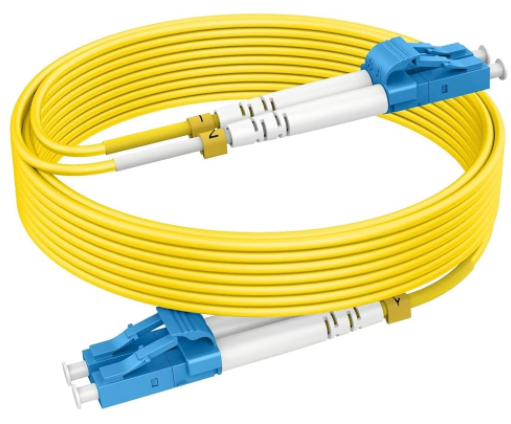ඔෆිව් ඔප්ටිකල් ෆයිබර් කේබල් කෝ.
ලිපිනය: ෂින්න්ග්, ලීනං, චීන
සම්බන්ධ පුද්ගලය: Zhang කළමණාකරු
දුරකථනය: 400-964-1314.
ජංගම දුරකථනය: 86 13904053308
?
2025-09-10 1123

Step 1: Choose the Correct Specification (OS1 vs. OS2)
This is the most critical decision. OS1 is designed for tight-buffered indoor applications with a maximum distance of 10 km. OS2 is the standard for loose-tube, outdoor, and long-distance (>10 km) installations. For virtually all outdoor and conduit installations, you must choose an OS2 single-mode ෆයිබර් ඔප්ටි කේබ්ල.Www.adsscable.cn
Step 2: Determine the Fiber Count
Plan for the future. While you might only need one pair (two fibers) for a current link, pulling a cable with higher fiber count (e.g., 12, 24, or 144) is cheap insurance. The cost of the cable is often negligible compared to the labor cost of installation.
Step 3: Select the Right Cable Jacket
The jacket protects the delicate glass fibers.
ඇතුලත: Use OFNR (Riser) or OFNP (Plenum) rated jackets for fire safety.
පිටතට: Choose black polyethylene jackets that are UV, moisture, and abrasion-resistant.
Arතවත් වැඩියd: In direct burial or rodent-prone areas, an arතවත් වැඩියd single-mode fiber cable with a corrugated metal tape is essential.
Step 4: Plan Your Connector Types
LC connectors are the modern standard for their small size, allowing high port density. SC connectors are also common but larger. Ensure your patch panels, transceivers, and patch cables all use the same connector type for a seamless installation.
Step 5: Verify Compatibility with Your Equipment
Check the wavelength requirements of your existing optical transceivers (commonly 1310nm or 1550nm). Any standard single-mode fiber optic patch cable will support these, but it's a crucial final check.
Installing single-mode fiber requires precision. The small core size means alignment for splicing must be perfect. Fusion splicing is the preferred method for permanent, low-loss connections. Always maintain the minimum bend radius—typically 20 times the cable diameter. Exceeding this can cause micro-bends that attenuate the signal or even break the fiber.
⚠️ Warning: Never pull on the fibers themselves. Always use the strength members (aramid yarn/kevlar) within the cable for tension during pulling. "Cable pulling eyes" should be attached to the strength member, not the fiber.
After installation, you must test your links. An Optical Time-Domain Reflectometer (OTDR) is used for this. It sends a light pulse down the fiber and analyzes the backscattered light to create a "signature" of the cable, identifying the location and loss of splices, connectors, and any faults.
☑️ Spec Confirmed: OS2 cable selected for outdoor/long-distance runs.
☑️ Fiber Count: Chosen a count that accommodates future growth.
☑️ Jacket Type: Selected outdoor, arතවත් වැඩියd, or riser/plenum jacket as needed.
☑️ Connectors: LC or SC connectors specified and ordered.
☑️ Path Planned: Route avoids sharp bends and potential damage points.
☑️ Splicing Plan: Fusion splicer and technician arranged for termination.
☑️ Test Gear: OTDR or power meter/light source booked for certification.
Mastering single-mode ෆයිබර් ඔප්ටි කේබ්ලs is a valuable skill. By focusing on the correct specification, robust construction, and careful handling, you can build incredibly fast and reliable network backbones that will serve for decades.
Q1: Can I use single-mode fiber for short distances inside a building?
A1: Absolutely. While it may be overkill, using single-mode fiber inside a building is common for future-proofing. It allows for a seamless connection to outside plant fiber and supports any future bandwidth need without re-cabling.
Q2: What is the actual difference between OS1 and OS2 single-mode fiber?
A2: The key difference is in the attenuation specification. OS1 has a maximum attenuation of 1.0 dB/km, while OS2 is a tighter 0.4 dB/km. OS2 is also optimized to eliminate hydrogen-induced attenuation, making it stable for outdoor environments over 25 years.
Q3: Are single-mode and multi-mode connectors the same?
A3: The connector types (LC, SC) are the same and will physically fit. However, the alignment is different due to the core size mismatch. You should never plug a multi-mode transceiver into a single-mode fiber cable, or vice versa, as it will cause severe signal loss.
Q4: How fragile is a single-mode ෆයිබර් ඔප්ටි කේබ්ල?
A4: The glass fiber inside is very fragile. However, the cable itself is remarkably strong. The protective jackets, strength members, and (if applicable) armor are designed to withstand significant crush force, tension, and environmental stress, protecting the delicate fibers within.
Q5: What is the typical lifespan of an installed single-mode fiber cable?
A5: The designed lifespan for a quality single-mode fiber cable installation is over 25 years. The glass itself does not degrade over time. The long-term performance relies on the stability of the cable jacket, seals, and the quality of the initial splices and terminations.